Zach and I have been very busy in our first few days at Palmer Station. There have been a LOT of whales around, the days are long (boating hours are from 8:00 AM until 10:00 PM) and the weather has been great, so we have spent a lot of time out on the water every day. In addition to our own surveys, we often receive calls from the other researchers working in the area and have even been spotting whales from the Station itself. On Thursday afternoon I was writing a letter of recommendation – yes, for you Heather Heenehan – when I saw whales from my office window, so we launched our Zodiac to go out and sample the whales.
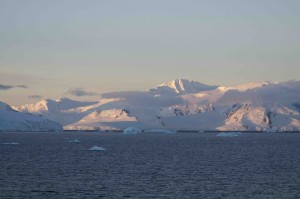
We keep track of the whales we encounter by using photographs of the underside of their tail flukes. Each humpback whale fluke has an individually distinctive and permanent pattern of black and white that is visible when the whale dives. We can also use the serrations on the trailing edge of the fluke, and sometimes even the shape of the flukes, to help tell whales apart. Of course, the whale has to lift its flukes for us to get a photograph and not all whales want to cooperate.
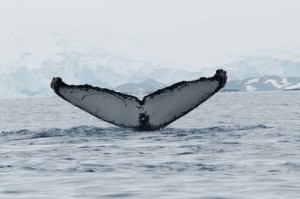
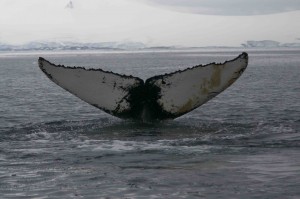
As you might imagine, it’s not always a simple task to tell whales apart when we are out in the field. On Friday we were with a group of three whales that were bubble feeding (more about that later). It was a very active group, with the whales continually changing position, so we had a difficult time determining which whale was which. In the field we try to link the permanent markings on the underside of the fluke with subtle differences in the shape of the dorsal fin, so that we can determine which whale to sample with our biopsy dart system (we obtain our biopsy samples before the whales raise their flukes). It helped that we had Chris Linder, a professional photographer, and Hugh Powell, a writer, with us on Friday to help keep track of the whales (make sure you check out their wonderful blog at: http://coseenow.net/converge/). It took a while, but we managed to get it right in the end.
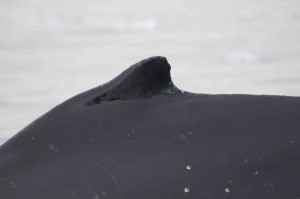
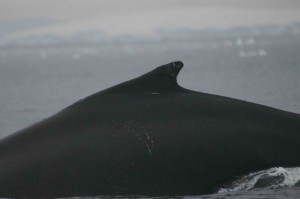
Of course, we are not the only researchers taking photographs of humpback whales, so we contribute images of the flukes we photograph to the Antarctic Humpback Whale Catalog (http://www.coa.edu/ahwccatalogue.htm), which is curated at the College of Atlantic in Maine. This allows matches to be made from photographs taken from both the Antarctic feeding grounds and the tropical breeding grounds. We think that most of our whales go to Panama to breed (imagine that), but we have made one match to a whale that was breeding in American Samoa (http://www.int-res.com/articles/esr_oa/n013p117.pdf). That’s pretty cool.

Great stuff Andy, looking forward to sharing Antarctica with you next March! Pretty excellent that Humpback numbers are so robust
What exciting research. One of my thrilling moments was a Minke bumping up under our zodiac in Antarctica.
That sounds great Dr. Read!!!! Good luck with everything and enjoy the trip. Hope you keep seeing lots of whales!